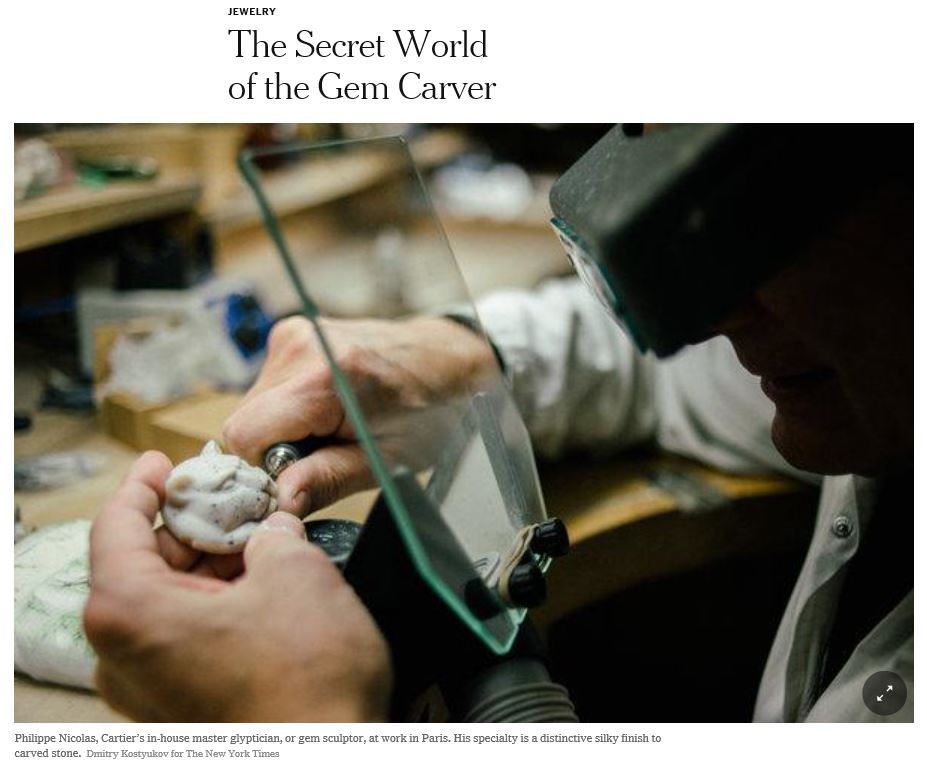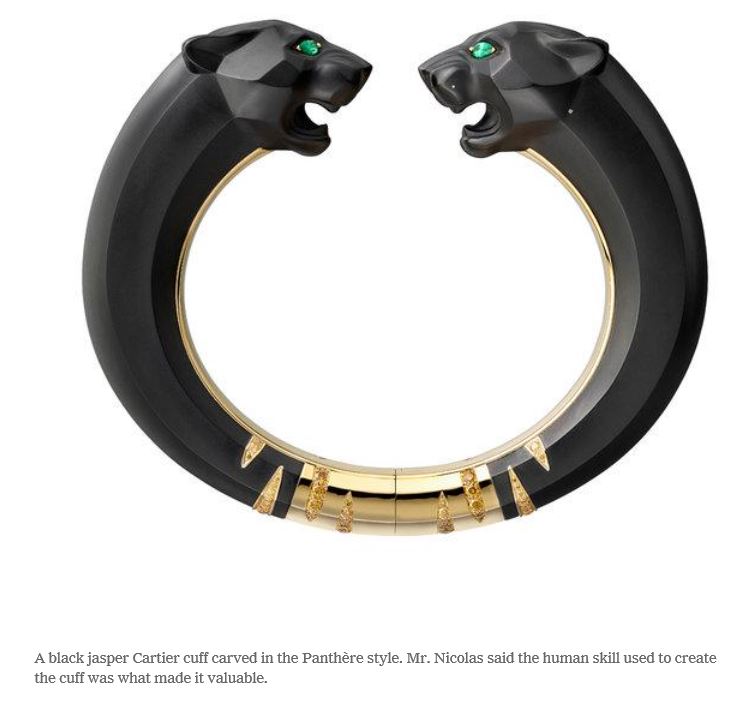It seems relatively rare that the story of the modern day gem carver (glyptician) is shared with the general public. Most, if not virtually all, of the articles about gem engraving and engravers are academic or trade generated and distributed. It’s too bad that the story of this unique artistic endeavor is not more widely known and appreciated.
Recently, I came across an article in the NY Times, which, ever so briefly, gave its readers a glimpse into the world of gem carving and carvers. It also gives an insight into why gem carvers do not become well known.
Below is a little taste of the article. The entire piece can be accessed at https://nyti.ms/2jIambs subject, of course, to the whims of the publication.

By Milena Lazazzera
Nov. 21, 2017
“In Résonances de Cartier, the house’s most recent high jewelry presentation, the diamonds, emeralds and rubies that are de rigueur in such collections were combined with more unusual materials like smoky quartz and fire opals.
But it was a black jasper cuff, carved in a classic Panthère style, that would catch the discerning eye. It was the work of a glyptician, or gem sculptor, a highly trained artisan who turns rough stone or jewels into dazzling art.

“Black jasper per se is not rare or precious,” said Philippe Nicolas, Cartier’s in-house master glyptician, whose atelier designed and sculpted the bracelet. It was difficult to find two large homogeneous pieces of jasper, but the human skill used to create the cuff was what made the piece valuable, he said……
The Munich-based jewelry house Hemmerle inserts old cameos into modern jewels because “in the olden days, sculptors looked at the stone in a more artistic way, asking themselves how to maximize beauty,” said Christian Hemmerle, a member of the fourth generation to work in the family business.
Hemmerle also offers some sculpted objects in crystal. But, when asked, ‘Who was the glyptician?’ Mr. Hemmerle, like many others in the business, answered, ‘I cannot reveal my sources.’”
Enjoy and Happy New Year!!!!
Leave a Reply